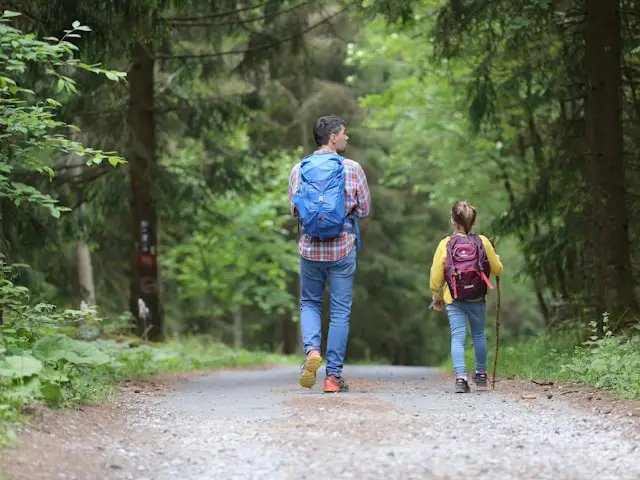
In our fast-paced world, children are increasingly exposed to stress and distractions.
Integrating mindfulness practices into their daily routines can offer numerous benefits, helping them manage stress, improve concentration, and foster emotional intelligence.
In this post, we’ll explore the benefits of mindfulness for children, outline practical mindfulness activities, and provide tips on incorporating these practices into everyday life.
Benefits of Mindfulness for Children
Stress and anxiety reduction
Mindfulness can help children feel less stressed and anxious.
By practicing mindfulness, kids learn techniques to calm themselves and find inner peace.
Research shows that mindfulness can greatly reduce symptoms of anxiety in children, giving them useful tools to handle everyday challenges and feel more relaxed.
- Read also: Child’s Love Language: Different Attachment Styles on Children
- Read also: Answered: The Psychology of Moral development in Children
Improved concentration
Regular mindfulness practice can help children focus better and improve their attention span.
This leads to better performance in school and other activities.
A study by the University of British Columbia found that children who practiced mindfulness were able to concentrate more effectively and stay on task longer, which helps them succeed academically.
Enhanced emotional intelligence
Mindfulness helps children become more aware of their emotions and teaches them how to manage those feelings better.
By recognizing and naming their emotions, children can develop better emotional intelligence.
This means they can handle their emotions in healthier ways, leading to better emotional regulation and overall well-being.
Better sleep
Practicing mindfulness can also improve sleep quality for children.
Good sleep is essential for their physical and mental health.
Mindfulness activities, especially those done before bedtime, can help children fall asleep faster and enjoy deeper, more restful sleep.
This makes them feel more refreshed and ready for the day.
Social skills development
Mindfulness encourages empathy and understanding, which can improve a child’s social interactions and relationships.
Children who practice mindfulness are often more compassionate and better at resolving conflicts with their friends.
This helps them build stronger and more positive relationships with their peers.

Mindfulness Activities for Children
Sensory exploration
Create a sensory station with a variety of objects that have different textures, colors, and scents.
Encourage the children to touch, smell, and describe each item thoughtfully and mindfully.
This activity helps kids become more aware of their senses and brings their attention to the present moment.
For example, they might describe a soft, fluffy ball or a fragrant flower, focusing on how each one feels, looks, and smells.
Nature walks
Take children on a walk in nature and encourage them to really pay attention to their surroundings.
Ask them to listen to the sounds of birds singing, feel the breeze on their skin, and notice the different colors of the plants and trees.
This practice helps them stay grounded in the present moment and appreciate the beauty of the world around them.
It’s a simple way to teach kids to observe and enjoy their environment.
Mindful breathing with a breathing buddy
Use a stuffed animal as a “breathing buddy” for this activity.
Have the children lie down and place the buddy on their stomachs.
Then, guide them to take slow, deep breaths while watching the buddy rise and fall with each breath.
This exercise helps children become more aware of their breathing, which is a key mindfulness technique.
It also makes deep breathing more fun and engaging for kids.

Visual guided meditation
Ask the children to close their eyes and imagine a peaceful place, such as a beach, a forest, or a cozy room.
Encourage them to use all their senses to visualize the details of this place.
They should imagine the sounds they might hear, the things they might see, and the smells they might encounter.
This type of meditation helps reduce anxiety and promotes relaxation by allowing children to immerse themselves in a calming and comforting environment.
Mindful listening
Have the children sit quietly and close their eyes to listen carefully to the sounds around them.
After a few minutes, ask them to share what they heard.
This exercise helps kids focus on the present moment and improves their listening skills.
They might notice things like the ticking of a clock, birds chirping, or even distant conversations, which helps them become more aware of their surroundings.
Breathing in colors
This activity combines deep breathing with colorful visualization.
Ask children to breathe deeply and imagine a specific color filling their bodies as they inhale, bringing in positive feelings.
As they exhale, they should visualize letting go of any negativity or tension.
This technique is soothing and helps children associate positive emotions with their breath.
Body scan meditation
Guide children to either lie down or sit comfortably and then focus on each part of their body, starting from their toes and moving up to their head.
Encourage them to notice any sensations or feelings in each area without judging them.
This practice promotes relaxation by helping children become more aware of their bodies and release any built-up tension.
Mindful coloring
Provide children with coloring pages and ask them to pay close attention to the colors, patterns, and shading techniques as they color.
Mindful coloring helps slow down their thoughts and promotes relaxation.
It’s a creative and calming activity that allows children to focus on the present moment and enjoy a peaceful, therapeutic experience.
Mindful monday routine
Start the week with a “Mindful Monday” routine to set a positive tone.
Begin by discussing expectations for the week and creating a calm atmosphere in the room.
Incorporate deep breathing, focus on the senses, and use activities like coloring sheets and relaxing music.
This routine helps children enter the week with a sense of calm and mindfulness.

- Read also: Unveiled: The Impact of Childhood Experiences on Adult Behavior
- Read also: The Journey of Childhood – Personality Development in Childhood
Conclusion
Incorporating mindfulness practices into children’s routines can have profound benefits, from reducing stress and anxiety to improving concentration and emotional intelligence.
By engaging in mindfulness activities like sensory exploration, nature walks, and mindful breathing, children can develop valuable skills that will serve them throughout their lives.
Remember, the key is consistency and making mindfulness a fun and integral part of their daily routine.
FAQs
Children as young as preschool age can start practicing mindfulness with simple activities like mindful breathing and sensory exploration.
Ideally, children should practice mindfulness daily, even if it’s just for a few minutes. Consistency is more important than duration.
Yes, mindfulness has been shown to help children with ADHD improve their focus and self-control. It’s a beneficial tool for managing symptoms.
Mindfulness is generally safe for children. However, it’s important to ensure that activities are age-appropriate and to be mindful of each child’s comfort level and response.


